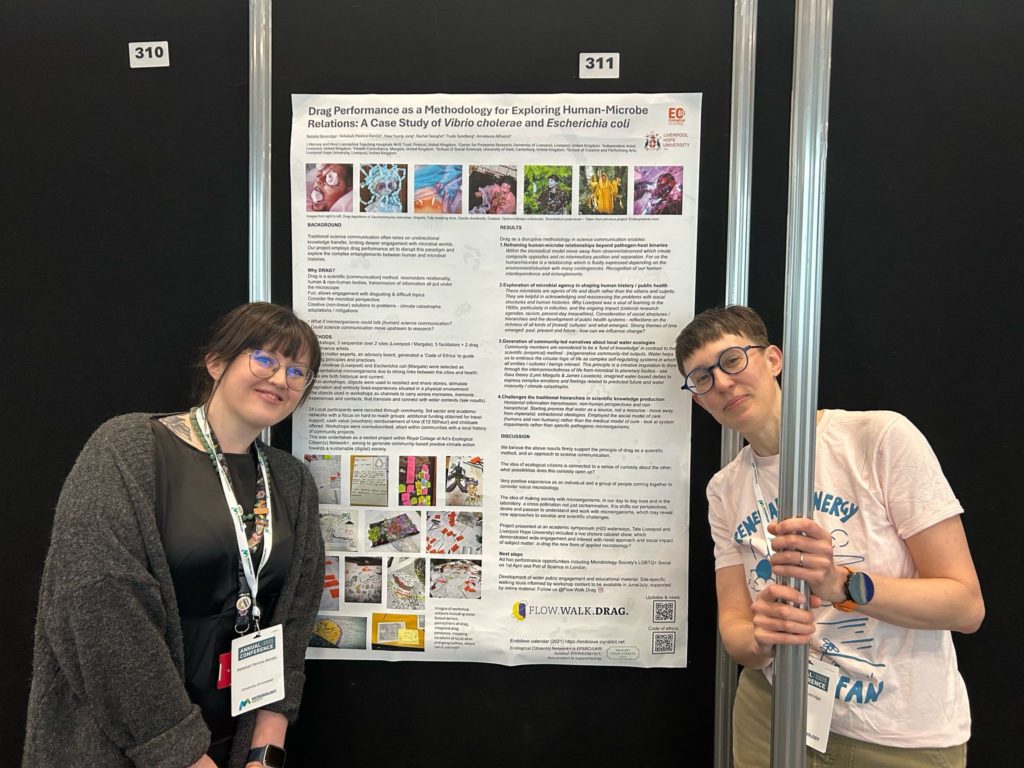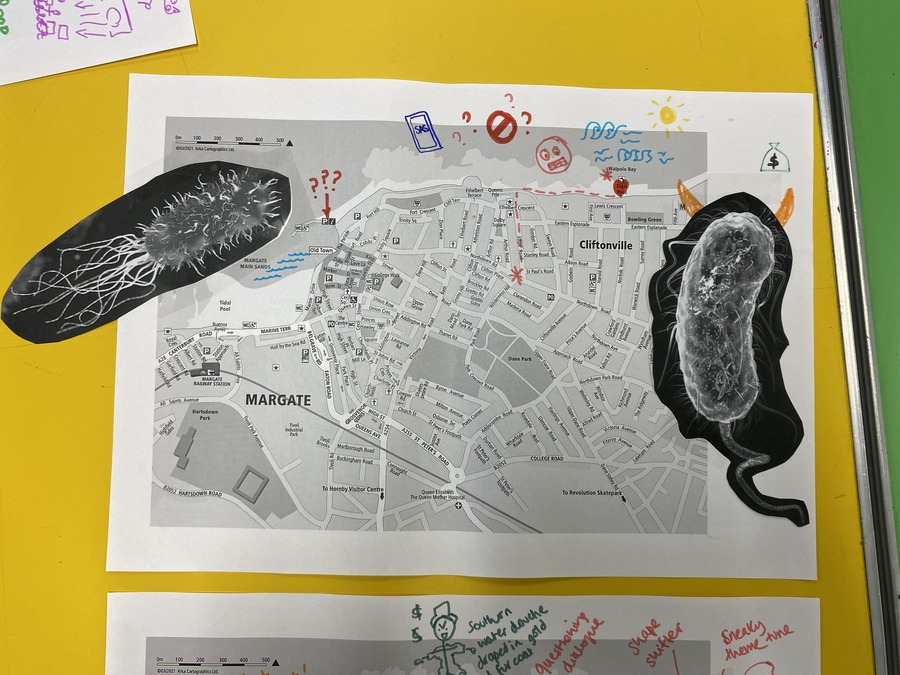A few images from the Queer MicroSoc Social show, presenting our fabulous micro drag artists Branden Curtis (cholera) and Laura Wyatt O’Keeffe (E. coli).







Tracing the flow of microorganisms cholera and E. coli through Liverpool and Margate’s historical waterways, our performances reveal the intricate web of human relationships with this fluid resource. From the shared use of wells and washhouses to the impact of industrial pollution on communities, the project viscerally demonstrates how water has always been a social connector, shaping the fabric of urban life.
A few images from the Queer MicroSoc Social show, presenting our fabulous micro drag artists Branden Curtis (cholera) and Laura Wyatt O’Keeffe (E. coli).






The Flow.Walk.Drag. team has given careful thought to the principles and ethical approach of the project. As a participatory project, co-created with multiple collaborators, including workshop participants recruited in Margate and Liverpool, we are attentive to our responsibilities to our co-creators and the communities we work in.
Our project centres joy and play, using drag and creative participatory methods. Yet we are exploring difficult topics that have the potential to evoke distress among those we work with. FWD’s themes may evoke disgust, anger and other difficult emotions, and may generate conflict and backlash as we explore themes of contagion, pollution, exclusion, and our relationships with microorganisms. Working with people as collaborators and co-creators is always a complex process, as we navigate a range of needs, perspectives and expectations, and respond to issues that arise.
To do this work with care and integrity, we have established an ethics infrastructure for the project which includes a Code of Ethics and an Advisory Board. This infrastructure guides our work, setting out principles and processes that act as ethical coordinates, helping us to think through our approach to every element of the project and to respond to issues as they arise.
(more…)Our final workshop focused on themes of movement – moving together and creating movement. The group gathered in CAMP on Margate’s Northdown Road for snacks and drinks before walking to the Southern Water Pumping Station, a 40-minute walk along the coast. The high wind dominated the experience, reminding us of a key principle of the project: to be humble and in awe of nature. As we walked, we talked about the sea foam, complex feelings of (dis)ease and being un(safe) in the water, and the clarity of light that made visible the wind turbines off the coast.

The interdisciplinary Flow.Walk.Drag. research team, led by Dr. Natalie Beveridge, made a significant impact at the Microbiology Society Annual Conference held in Liverpool this month (31 March – 3 April).
Groundbreaking Research Poster Presentation
On April 1st, the team presented their innovative research poster titled “Drag Performance as a Methodology for Exploring Human-Microbe Relations: A Case Study of Vibrio cholerae and Escherichia coli.”
The project challenges traditional science communication methods by employing drag performance art to explore the complex relationships between humans and microbes. Rather than using unidirectional knowledge transfer, this approach creates space for deeper engagement with microbial worlds and their influence on human history and public health.
Dr. Beveridge explains: “Drag is a scientific method that reconsiders relationality. It puts human and non-human bodies and the transmission of information all under the microscope, allowing us to engage with difficult topics in a creative way.”Dr. Alifuoco adds: “Our work with Flow.Walk.Drag. demonstrates how performance methodologies can disrupt traditional hierarchies in scientific knowledge production, enabling horizontal information transmission and non-human perspectives.”

On March 1st, co-creators and facilitators gathered in Margate for the second of three workshops to discuss sewage, public health concerns, and the impact of pollution on our everyday life.
Through creative mapping exercises, participants mapped personal and collective experiences through often vivid examples of interactions with E. Coli and sewage spills. Public health, safety concerns and the impact the sewage crisis has on everyday lives and swimming habits were dominant themes as we mapped our stories onto the map of the coast. We also plotted the history of the sea as a place of healing and Margate as a location of rehabilitation. This was juxtaposed with our current situation where worries about the sea as potentially unsafe due to sewage dominate.
